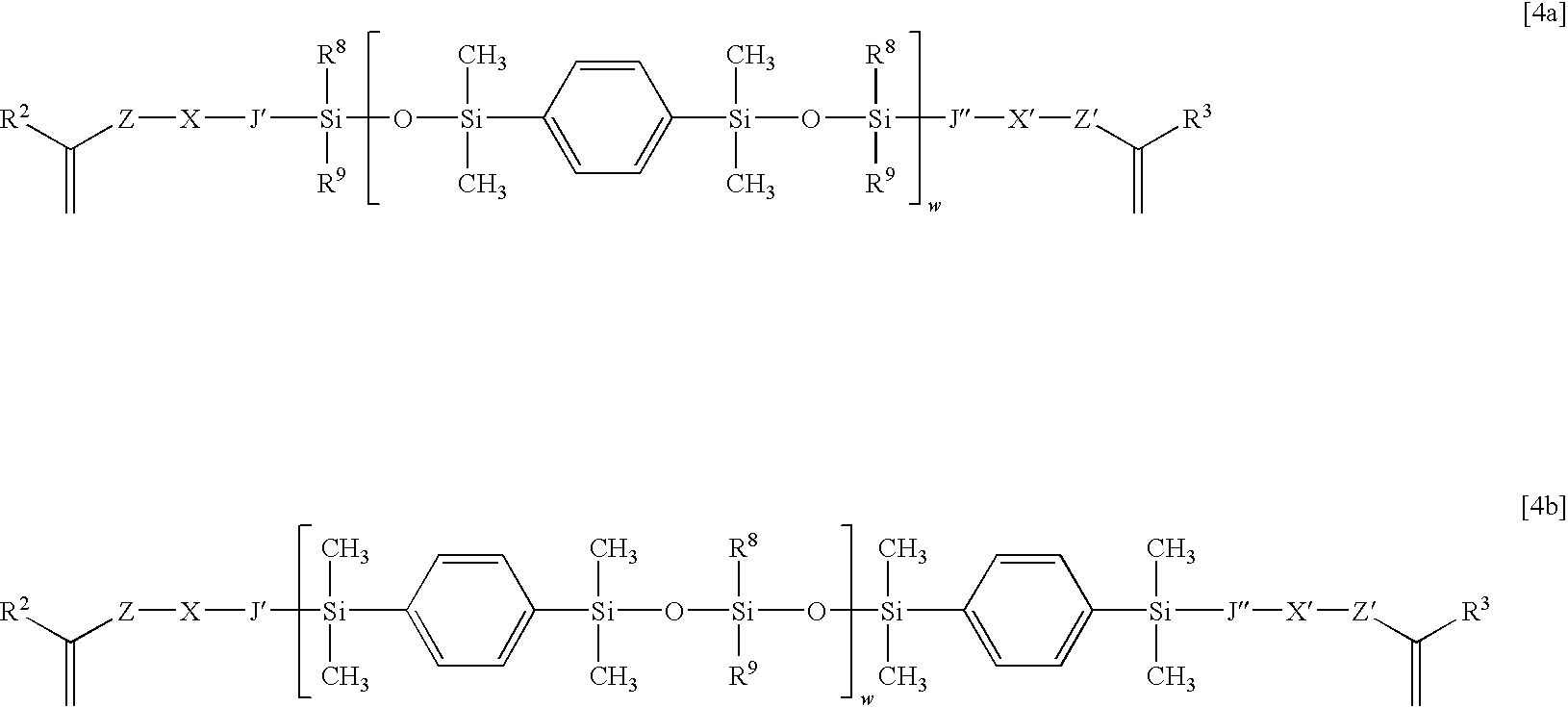Ophthalmic and otorhinolaryngological device materials containing phenylene-siloxane macromers
a technology of phenylene-siloxane and ophthalmic devices, which is applied in the field of improved ophthalmic and otorhinolaryngological device materials, can solve the problems of less desirable than other materials, explosive unfolding of hydrogel materials, and relatively low refractive index
- Summary
- Abstract
- Description
- Claims
- Application Information
AI Technical Summary
Benefits of technology
Problems solved by technology
Method used
Image
Examples
example 1
Preparation of Poly(diphenylsilloxy-1-dimethylsilyl-4-dimethylsiloxyphenylene)
[0088](a) Chain End Functionalized Phenylene Siloxane Copolymers
[0089]The synthesis of a phenylene siloxane copolymer is shown in Reaction 1. A Lewis acid catalyzed polycondensation reaction between diphenyldimethoxysilane [5] and 1,4-bis(dimethylsilyl)benzene [6] yields an alternating copolymer where the end groups are controlled through reaction stoichiometry or end-capping reactions. This polymerization is adapted from a recent literature report and patent application, where Cella et al. teach the use of (pentafluorophenyl)boron as a polycondensation catalyst to prepare polysiloxane copolymers.
[0090]
[0091]Reaction 1. Synthesis of Phenylene Siloxane Copolymer by Polycondensation Reaction.
[0092]To create a chain end functional polymer, the copolymerization is conducted in the presence of a slight excess of one of the monomer components. For example, using a slight excess of 1,4-bis(dimethylsilyl)benzene [...
PUM
| Property | Measurement | Unit |
|---|---|---|
| refractive index | aaaaa | aaaaa |
| refractive index | aaaaa | aaaaa |
| glass transition temperature | aaaaa | aaaaa |
Abstract
Description
Claims
Application Information
 Login to View More
Login to View More - R&D
- Intellectual Property
- Life Sciences
- Materials
- Tech Scout
- Unparalleled Data Quality
- Higher Quality Content
- 60% Fewer Hallucinations
Browse by: Latest US Patents, China's latest patents, Technical Efficacy Thesaurus, Application Domain, Technology Topic, Popular Technical Reports.
© 2025 PatSnap. All rights reserved.Legal|Privacy policy|Modern Slavery Act Transparency Statement|Sitemap|About US| Contact US: help@patsnap.com



